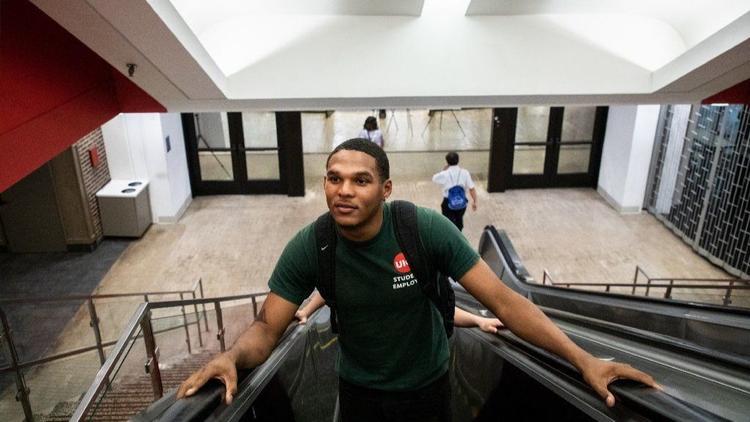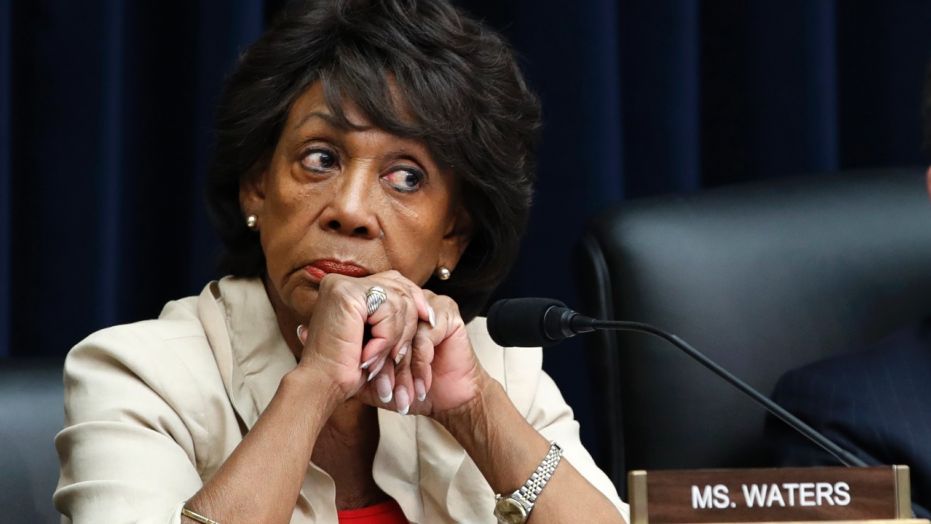
Near the end of his freshman year at the University of Illinois at Chicago, Ja’Waun Williams heard that a dean there had been a member of the fraternity Williams was pledging.
After bonding over their shared affection for Alpha Phi Alpha, Dean Alfred Tatum persuaded Williams to shift his academic focus. Instead of preparing to teach high school math, Tatum suggested, why not major in urban elementary education?
Modest as it may seem, that change is an example of what supporters say could help solve daunting challenges confronting African-American students, particularly boys, across the country. Spurred by Tatum, UIC’s dean of the College of Education, the school aims to invest about $1 million in an initiative to recruit and train male elementary education majors of color, similar to how universities recruit and train star athletes.
“I felt that it was great that they were pinpointing that demographic,” said Williams, a 19-year-old Chicagoan and graduate of Hillcrest High School in Country Club Hills. “It’s amazing. There’s definitely a need for them.”
Nationwide, 2 percent of public school teachers are African-American males and 2 percent are Hispanic males, while students of color make up about half the nation’s public school enrollment from pre-kindergarten to 12th grade, according to the U.S. Department of Education.
Illinois State Board of Education data show that the percentage of black male teachers in the state’s public elementary schools is even smaller. There are about 575 black male public elementary school teachers in Illinois — roughly 1 percent of the total — and the number who are Hispanic and male is even smaller, at approximately 465.
Research suggests that those meager percentages are associated with academic problems for young black male students in particular, from higher dropout rates to larger achievement gaps between them and white students. Differences for Hispanic students are less distinct.
And analysis after analysis shows that increasing the number of black elementary school teachers can help reverse those trends.
CPS budgets: See how your school’s funding will change »
Research by an economist at University of California at Santa Barbara, for example, showed that black students with black teachers were suspended less often than black students with white or Hispanic teachers.
A 2016 study by the American Educational Research Association concluded that, test scores and other factors being equal, black students were three times more likely to be assigned to gifted programs when taught by a black teacher than a non-black teacher.
Other research from North Carolina and Tennessee showed that merely having one black teacher in early elementary grades led to greater expression of interest in college by African-American boys and raised the proportion of black students taking a college entrance exam by 10 percent.
Researchers call it the role model effect.
Tatum calls those young men teachers “soul models. Soul models come in your life and stay in your life. Role models come and go.”
“This is not just becoming a teacher,” Tatum added. “This is becoming a leader.”
Full ride for elementary education majors
The effort is known as Call Me MISTER, which stands for Mentors Instructing Students Toward Effective Role Models. The inaugural group of seven students — Williams, who is African-American, and six incoming freshmen who are Latino — each will receive full scholarships covering tuition and room and board. Academic and mentoring support also will be provided, as will job placement assistance. Six of the seven will reside in the same residence hall.
The Chicago program is modeled after an initiative started at Clemson University in 2000. Faculty at the South Carolina school were startled by the high number of black men incarcerated and the low number of black teachers in the state, said Roy Jones, executive director of the MISTER program and one of the early organizers of the initiative.
A group of historically black colleges collaborated with Clemson to create MISTER. As of this spring, 258 African-American graduates of the program are teaching or working as administrators in public elementary and middle schools across South Carolina, Jones said.
“In effect,” he wrote in an executive summary of the MISTER initiative, “this program purports nothing less than to break a tragic national pattern of pathology relating to the young Black male in America.”
Over the years, the program has expanded to 32 universities and colleges in South Carolina and nine other states, mostly in the South. UIC is the first major, urban public research institution to establish a MISTER initiative.
Commentary: Students win when teachers are supported »
Tatum became intrigued with the program at Clemson when he spoke at a MISTER conference there three years ago.
“I went in that room and it was electric,” Tatum recalled. “There was nothing like it. I left Clemson on fire. MISTER became a glue that we rallied around.”
He got UIC’s administrative support and, last year, identified young male high school students of color who’d already been accepted to the university’s College of Education. Tatum reached out to them and their families, visiting their homes, taking them out to eat, emphasizing that they had the chance to make an enormous impact on the lives of young people — and, of course, noting that the candidates’ college education would be free.
That offer was next to impossible to reject. When the young men committed, Tatum often would show up in one of their high school classes, typically without their knowledge, to make the surprise announcement that this “MISTER” was being given a full ride to UIC.
“I felt completely stunned, shocked,” said Cristian Zamora, 18, one of the six incoming freshmen in the program. In May, Tatum surprised Zamora in class at Chicago’s Golder College Prep. “But I loved it. Announcing it in front of my friends, and they kept cheering and cheering. It was a great moment.”
Tatum took Armando Romero’s family to dinner last spring and surprised Romero with the announcement of the scholarship.
“They caught me off guard,” said Romero, 18, a Muchin College Prep graduate from the city’s West Lawn neighborhood. He said it was difficult to describe the overwhelming emotion.
“My parents were really happy,” Romero said, “and so I was really happy.”
Teachers who can relate
Romero, Zamora and Williams all said they were drawn to teaching through their life experiences. Romero, the middle of three children, said he helped his little brother with math and was a teacher’s assistant in school and a junior counselor at a day camp.
“I always thought that I wanted to” become a teacher, he said. “It’s really cool to teach people new stuff and see them use it.”
Zamora, the U.S.-born son of two immigrants from Mexico, said he’s had a lifelong interest in helping others who need it, and he likes “spreading the positivity.”
Like the other four “Misters,” Romero, Williams and Zamora said they plan to teach in a Chicago neighborhood school.
“I can relate to them,” Zamora said of students there. “They’re going to be able to open up a little more.”
Growing up, Williams recalled having both terrific and weak teachers, but only one teacher of color. It started to matter when, in high school, he began thinking about a teaching career.
“I want to make sure that I give my students what I never had,” Williams said, “a young man who they can look up to, a person of color who they can look up to and see that they don’t have to just go be basketball players, or football (players) or rappers or anything like that. You know, you have people of your skin color who are teaching and shaping young minds.”
Twitter @tgregoryreports










